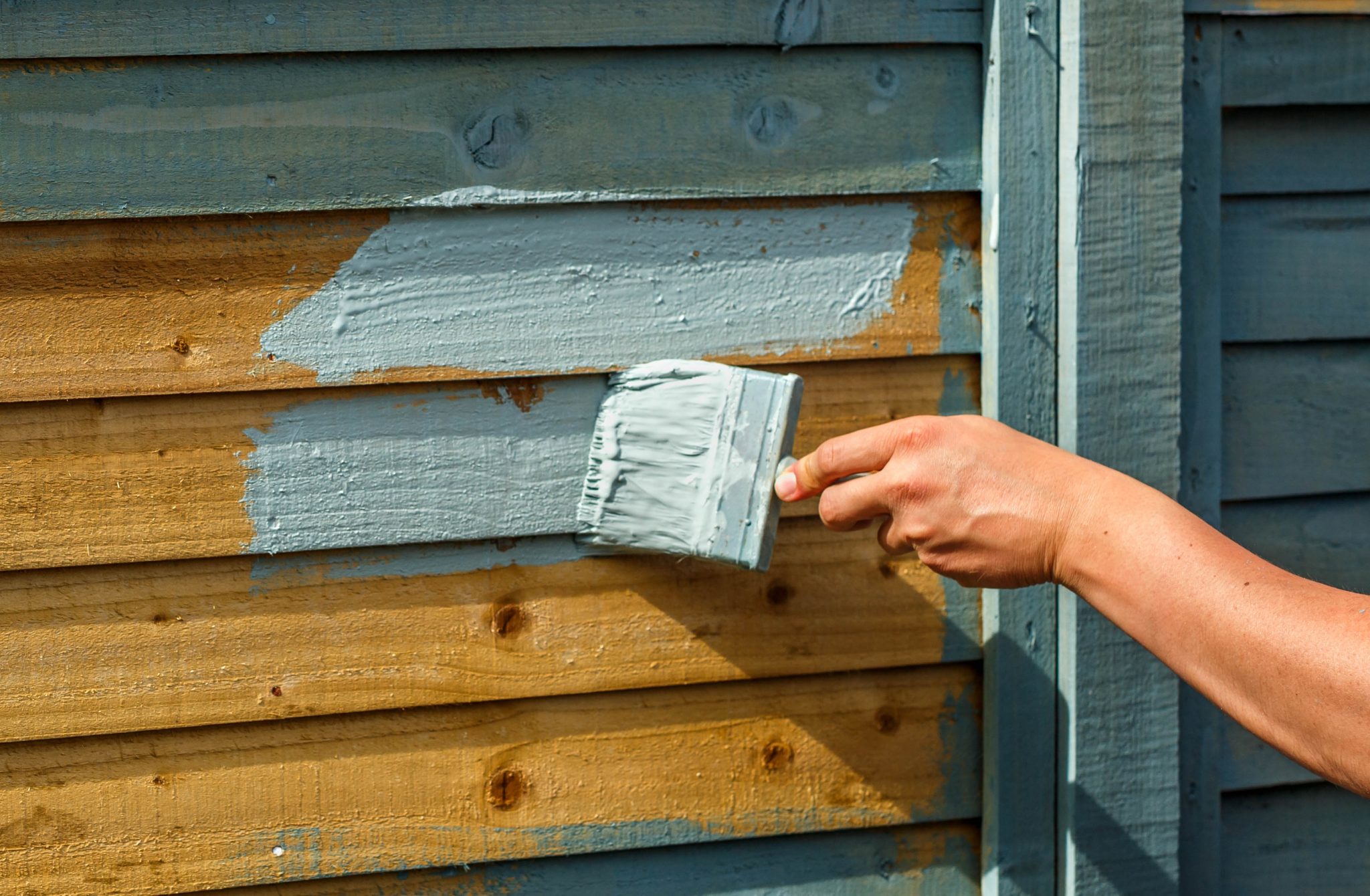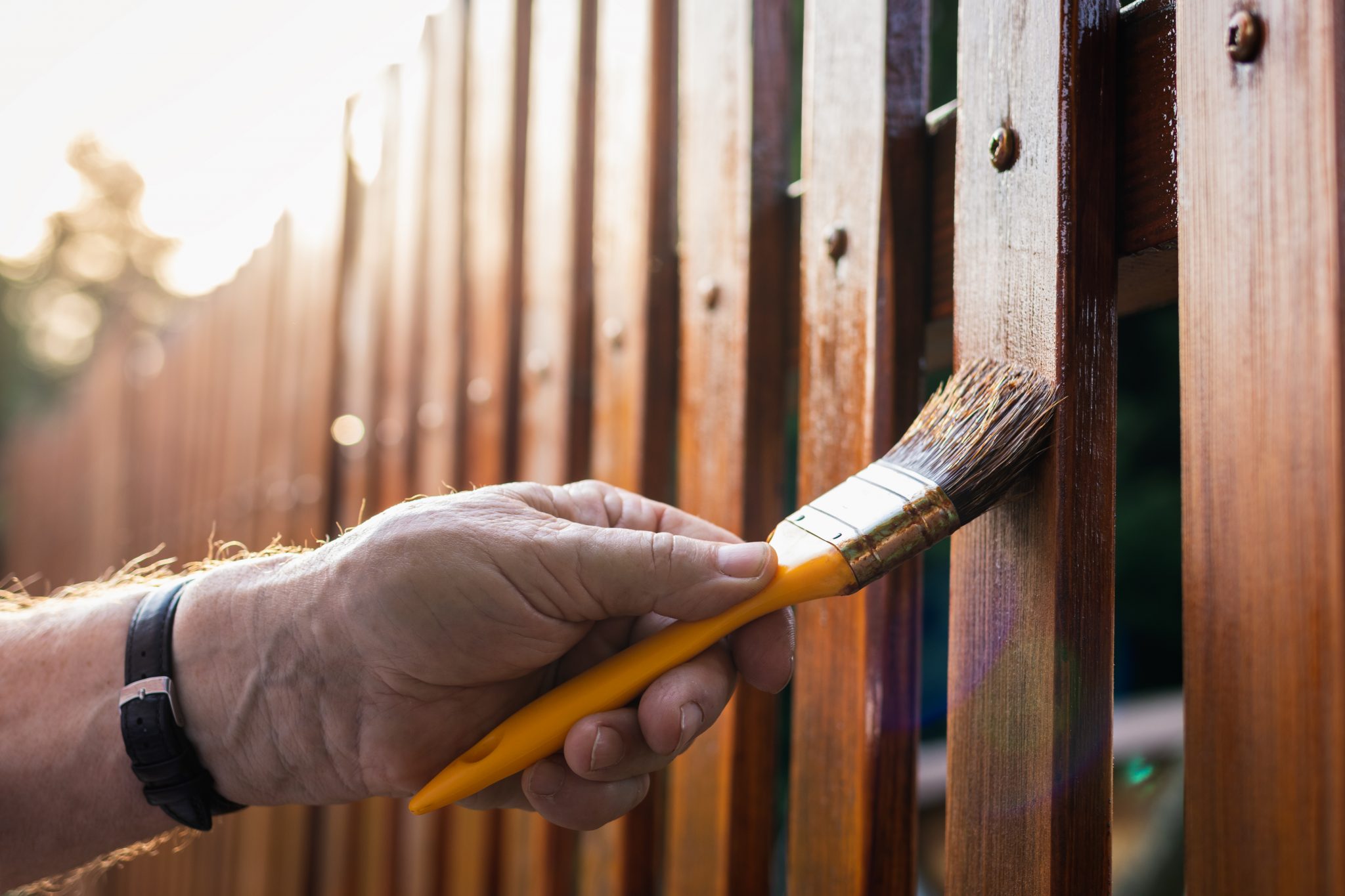Masonry paint although formulated for application to external walls, it is in fact a very versatile paint. It can be used over a variety of different surfaces. Homeowners use paint to add colour that enhances and the mental well-being to the environment around them. Masonry paint predominantly has been formulated to protect the exterior walls from weather.It protects the walls whether they are rendered, pebble-dashed or clad with either cement fibreboards or a range of other materials. So, can you use masonry paint on wood?
You will need to bear a few things in mind before you commence applying masonry paint to wood. Read on to find out the do’s and don’ts that will help make the application worthwhile. Soon enough, you will have the expertise to apply masonry paint to a number of different surfaces.

Is It OK To Use Masonry Paint On Timber?
The short answer is yes! Depending on which type of masonry paint you choose. Masonry paints such as Keim Granital or Mapei Silexcolor are only suitable for application onto mineral surfaces. Acrylic masonry paints such as Rust-Oleum Murfill or Bedec Extraflex applied in correct manner will offer excellent protection and longevity. So, you certainly can use some types of masonry paint on wooden fences and other wooden surfaces such as cladding, weatherboard, etc. However, as with all paint work, preparation is key and this most definitely applies to wood.
Wood is a porous material, meaning it will soak up paint rather than it sitting as a skin on top of the substrate. Sawn timbers will absorb paint far more readily than planned timbers. It is recommended that planned timber is sanded with a suitable sand paper such as 80 grit. This will open the surface of the timber allowing the paint to penetrate and bind to the fibres of the wood. To help the paint soak into the timber, most manufacturers recommend that the paint is thinned by between 15 – 35%. Most masonry paints are water based but some such as Zinsser AllWeather Pliolite are solvent based and you should not add water. Alternatively, adding Owatrol E-B to the masonry paint will provide better adhesion to the wooden substrate.
Therefore simply applying paint with no preparation is likely to leave you with either a patchy surface or paint that simply flakes and peels off. To avoid this, always ensure you follow the correct preparation methods for your paint. Taking time to choose the right paint and prepare correctly will save you from having to repeat the painting process much sooner than you would have hoped.
What Else Can You Paint with Masonry Paint?
Masonry paint can be applied on various substrates. Acrylic based paints such Glixtone AC1 and Zinsser Perma-White are designed to stick well to rough and uneven surfaces that may be textured, common for masonry areas. Examples of masonry surfaces that you can paint would be concrete walls, brick, stucco, plastics and softwood.
However, you should not use masonry paint on floors as it will not last, or on ferrous metals as it does not contain rust inhibiting pigments.
Many masonry paints are microporous allowing water vapour to migrate through the paint and evaporate keeping the building drier. Damp walls will absorb heat from inside the building meaning more energy is required to keep the property warm. Have a look at this blog to find out more:
Masonry Paint Colours
Promain offer a wide range of masonry paint colours to choose from. Aside from the standard colours, many paints can be tinted to over 30,000 different colours! Promain also have a scanner where we can match masonry paint to any colour you like. Dark grey masonry paint, grey masonry paint, white masonry paint and black masonry paint are all versatile and can be easily coordinated in different areas of the home, enhancing the surroundings.
Can Masonry Paint Be Used On Fences?
As we’ve already discovered, you can use masonry paint on wood. However, you should check with our technical team to find out if the product is suitable for external wood fences. As wood is exposed to the elements it expands with moisture level changes. Acrylic Masonry paints such as Bedec Extraflex and Rustoleum Murfill Renovation Paint have up to 400% elasticity, which allows the paint to expand and contract with the timber. As with north facing external walls, timber fencing will over a matter of time turn green with algae. This algae can be dramatically reduced by using a product such as Centrecoat R115 Fungicidal Paint Additive. It is an easy to add liquid that you just simply stir into the masonry paint.
Preparing The Fence
The first thing you will need to do is to thoroughly clean the fence. Make sure that any old paint has been sanded and removed and clean any moss or mould from the surface. For this we would strongly recommend the use of a fungicidal wash, such as Centrecoat GS36. Available in either 240ml or 5 Litres Centrecoat GS36 Fungicidal Wash is ideal for clearing organic contamination such as algae, mould, lichen or moss. The fungicidal wash will kill off the infestation and, once painted over, will help to prevent regrowth and will help the paint to last longer. As we said earlier, the Centrecoat R115 is recommended to be used within all acrylic paints.
To apply the fungicidal wash dilute twenty to one and mix with water. You then saturate the surface with the fungicidal wash and simply let it dry. Once that’s done, you can apply the paint.
Time To Start Painting!
Once the wood is clean and dry, you can begin painting. As with all painting projects, do not paint in hot sunny days, especially if it is windy. This will make the paint dry too quickly and not soak in and grip the timber. Read more on this blog:
You do not need to use a separate primer when applying masonry paint to a wooden fence. Simply thin the first coat of water based paint with 15% – 35% water. Or if you prefer you could use Owatrol E-B instead of water. Owatrol E-B acts as a stabilising product that penetrates deeply into the surface forming a strong bond to the application of the first coat to the surface. This therefore eliminates the need for a primer and saves you time and money!
This first coat of paint is essentially the primer. Once dry, you can apply a second undiluted coat of masonry paint. For further protection for your wooden fence, a second undiluted coat is recommended.

Can I Use Dulux Weathershield on Wood?
You can but, is it the best product for the project? Products such as Glixtone AC1 offer (when applied to masonry) a life expectancy of 30 years. It is suitable for harsh environments such as weather beaten coastal walls even in Scotland. This is why Promain only offer the best quality paints. For further information contact our technical team.
Other Masonry paints that are suitable for use on wood include Bedec Extraflex and Rustoleum Mathys Paracem Universal.
Conclusion
Preparation is key. Clean external wood with Centrecoat GS36. Always thin the first coat. Use a moss and mould additive such as Centrecoat R155. And always if you are going to use masonry paint on external wood, always check it is suitable to save yourself time and effort in the future. Always apply in suitable weather conditions. If you are going to get a sun tan, it is the wrong day to paint!
As the manufacturer trained staff at Promain are passionate about paint, they are more than happy to advise you within your individual circumstance. We provide you with quality products that will last, not just big names you will find in large DIY stores.
View our wood categories here:
- External Wood Paint and Stains
- Fence Paint
- Wooden Cladding Paint
- Barn Paint
- Owatrol Exterior Wood Paints
Want to read more? Have a look at these other exterior wood articles:

